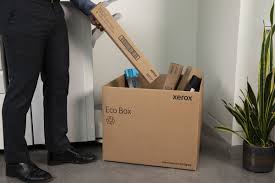Introduction
With millions of toner cartridges discarded each year, recycling them is crucial for environmental sustainability. Many people ask, “Can you recycle waste toner cartridges?” The answer is yes! Recycling toner cartridges helps conserve resources, reduces landfill waste, and even provides economic benefits.
In this guide, we will explore the importance, process, benefits, challenges, and best practices for recycling waste toner cartridges. We will also look at innovations and global impacts of toner cartridge recycling.
Why Should You Recycle Waste Toner Cartridges?
1. Environmental Benefits
Toner cartridges contain plastic, metal, and residual toner, all of which can be harmful to the environment when not disposed of properly.
- Prevents toxic waste from reaching landfills
- Reduces the release of microplastics into the environment
- Lowers carbon emissions by reusing materials
2. Resource Conservation
Manufacturing new cartridges consumes oil, metals, and energy. Recycling helps in:
- Saving 3.5 pounds of carbon dioxide emissions per recycled cartridge
- Reducing the need for virgin plastic and metal
- Lowering overall energy consumption
3. Economic Benefits
- Many manufacturers offer discounts or cashback on returning used cartridges
- Recycling supports green jobs in refurbishing and material recovery industries
4. Legal Compliance
Many countries regulate the disposal of electronic waste (e-waste). Recycling toner cartridges ensures compliance with environmental laws.
How Are Waste Toner Cartridges Recycled?
1. Collection
- Manufacturer Take-Back Programs: HP, Canon, Brother, and Epson provide recycling options.
- Retailer Drop-Off Points: Stores like Staples, Office Depot, and Best Buy accept used cartridges.
- Local Recycling Centers: Many waste management programs accept toner cartridges.
2. Sorting and Inspection
- Cartridges are categorized by brand and type.
- Usable cartridges are refurbished; damaged ones are recycled for material recovery.
3. Disassembly
- Components are separated into plastic, metal, and residual toner.
- Each part is cleaned and prepared for reuse.
4. Material Recovery
- Plastic is melted and molded into new products.
- Metal parts are sent to metal recycling plants.
- Residual toner is repurposed for industrial applications (e.g., asphalt production).
5. Refurbishing (Optional)
- Some cartridges are refilled with fresh toner and sold as remanufactured cartridges.
- These offer a more eco-friendly and cost-effective alternative to new cartridges.
Challenges in Recycling Waste Toner Cartridges
| Challenge | Description |
| Residual Toner | Fine toner particles require careful handling to avoid contamination. |
| Complex Design | Many cartridges have intricate components, making disassembly labor-intensive. |
| Lack of Awareness | Many people don’t know that toner cartridges can be recycled. |
| Recycling Costs | Some programs require logistics and labor costs that limit access to convenient recycling facilities. |
Best Practices for Recycling Waste Toner Cartridges
1. Utilize Manufacturer Take-Back Programs
Major printer brands offer free recycling programs, often providing prepaid shipping labels.
2. Choose Retailer Recycling Programs
Stores like Staples and Office Depot accept used cartridges and even provide store credits.
3. Contact Local Recycling Centers
Check with local waste management services to find drop-off locations.
4. Properly Prepare Cartridges for Recycling
- Seal the cartridge in a plastic bag to prevent toner spills.
- Use the original box or a padded envelope when shipping.
5. Consider Remanufactured or Refillable Cartridges
- Refillable cartridges can be used multiple times, reducing waste.
- Remanufactured cartridges are an affordable and eco-friendly alternative.
6. Educate and Implement Workplace Recycling Programs
Encourage businesses to adopt office-wide recycling initiatives to make toner cartridge recycling a standard practice.
Innovations in Toner Cartridge Recycling
1. Closed-Loop Recycling
- Companies like HP use materials from old cartridges to create new ones.
- This process reduces raw material demand and lowers environmental impact.
2. Residual Toner Repurposing
- Used toner is repurposed in industrial applications, including:
- Asphalt production
- Steel manufacturing
3. 3D Printing Filaments
- Recycled plastic from toner cartridges is transformed into 3D printing filament.
Global Impact of Recycling Waste Toner Cartridges
| Statistic | Impact |
| 375 million | Toner cartridges discarded annually worldwide. |
| 1 billion | HP cartridges recycled since 1991. |
| 3.5 lbs | CO2 saved per recycled cartridge. |
| 2.5 lbs | Plastic and metal diverted from landfills per cartridge. |
Conclusion
Can you recycle waste toner cartridges? Absolutely! By participating in recycling programs, choosing remanufactured cartridges, and educating others, individuals and businesses can make a significant environmental impact. With continuous innovations in closed-loop recycling and material repurposing, the future of toner cartridge recycling looks promising.
Recycling toner cartridges is not just an option—it’s a responsibility. Start today by finding a recycling program near you!
Frequently Asked Questions (FAQs)
1. Can I throw away toner cartridges in the trash?
No, toner cartridges contain plastics and chemicals that should not end up in landfills. Always recycle them through an authorized program.
2. How do I find a toner cartridge recycling program near me?
Check with printer manufacturers, office supply stores, or local recycling centers for collection points.
3. Are remanufactured toner cartridges reliable?
Yes! Many remanufactured cartridges undergo strict quality control and offer comparable print quality at a lower cost.
4. How does recycling toner cartridges benefit the environment?
Recycling prevents waste, reduces carbon emissions, and conserves valuable resources like oil and metal.
By taking small steps like recycling toner cartridges, you contribute to a more sustainable future. Start today and make a difference!

Leave a Reply